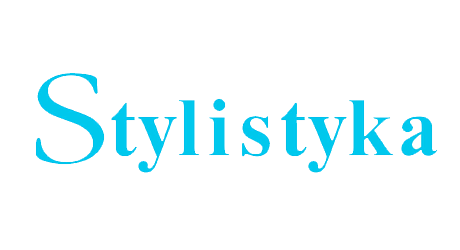Adamzik, K., 2001a, DieZukunft von Text(sorten)linguistik. Textsortennetze, Textsortenfelder, Textsorten in Verbund. — Zur Kulturspezijik von Textsorten, red. U. Fix, S. Habscheid, J. Klein, Tiibingen str. 15-30.
Google Scholar
Adamzik, K., 2001b, Sprache. Wege zum Yerstehen, Tiibingen - Basel.
Google Scholar
Adamzik, K., 2004, Textlinguistik. Eine einfuhrende Darstellung, Tiibingen.
Google Scholar
Bartmiński J./Niebrzegowska-Bartmińska, S., 2009, Tekstologia, Warszawa, de Beaugrande, R.-A./Dressler, W. U., 198,Einjuhrungin die Textlinguistik, Tiibingen.
Google Scholar
Bilut-Homplewicz, Z., 2010, Tautonimia terminologiczna? Kilka uwag o użyciu terminów „Diskurs” i „dyskurs" w językoznawstwie niemieckim i polskim, Rzeszów
Google Scholar
Bilut-Homplewicz, Z.,/Czachur W.,'Smykała M., 2009, Lingwistyka tekstu w Niemczech. Pojęcia, problemy, perspektywy. (Antologia tłumaczeń), Wrocław.
Google Scholar
Bilut-Homplewicz, Z./Czachur, W./Smykała, M., 2009, Lingwistyka tekstu w Polsce i w Niemczech. Pojęcia, problemy, perspektywy, Wrocław.
Google Scholar
Brinkei, K., 1979, Zur Gegenstandsbestimmung und Aufgabenstellung der Textlinguistik— Textvs. Sentence. Basic Questions ofText Linguistics. First Part, red. J. S. Petófi, Hamburg, str. 3-12.
Google Scholar
Brinker, K., 1985, Linguistischc Textanalyse. Eine Einjiihrung in Grundbegriffe und Methoden, Berlin.
Google Scholar
Daneś, F., 1970, Zur linguistischen Analyse der Textstruktur, „Folia Linguistica” IV, str. 72-78.
Google Scholar
Dimter, M., 1981, Textklassenkonzepte heutiger Alltagssprache. Kommunikationssituation, Textfunktion und Textinhalt ais Kategorien alltagssprachlicher Textklassifikation, Tiibingen.
Google Scholar
Fix, U., 2008, Texte und Textsorten — sprachliche, kommunikative und kulturelle Phanomene. Berlin.
Google Scholar
Franke, W., 1991, Linguistische Texttypologie - Aspekte der Textlinguistik, red. K. Brinker, Hildesheim, str. 157-182.
Google Scholar
Gajda S., 2009, Gatunki wypowiedzi i genologia - Lingwistyka tekstu w Polsce i w Niemczech. Pojęcia, problemy, perspektywy, red. Bilut-Homplewicz, Z./Czachur, W./Smykała, M., 2009, Wrocław, str. 135-147.
Google Scholar
Giilich, E.,/Raible, W., red '972, Textsorten. Differenzierungskriterien aus linguistischer Sicht, Frankfurt.
Google Scholar
Hartmann, P., 1968, Zum Begriff des sprachlichen Zeichens. Zeitschrift fur Phonetik, Sprachwissenschaft und Kommunikationsforschung 21, str. 205- 222.
Google Scholar
Hartmann, R, 1971, Texte ais linguistisches Objekt, red. Stempel, Wolf-Dieter str. 9-29.
Google Scholar
Harweg, R., 1968, Pronomina und Textkonstitution, Munchen.
Google Scholar
Heinemann, M.,, Heinemann, W., 2002, Grundlagen der Textlinguistik. Interaktion - Text- Diskurs, Tiibingen.
Google Scholar
Heinemann, W., 2000, Textsorte - Textmuster - Texttyp — Text und Gesprachslinguistik. Ein internationales Handbuch zeitgenóssischer Forschung. 1. Halbband, red. K. Brinker, G. Antoś, W. Heinemann, S. F. Sager, Berlin-New York, str. 507-523.
Google Scholar
Heinemann, W., 2009, Rodzaj tekstu - wzorzec tekstu - typ tekstu — Lingwistyka tekstu w Niemczech. Pojęcia, problemy, perspektywy. (Antologia tłumaczeń), red. Z. Bilut-Homplewicz, W. Czachur, M. Smykała, Wrocław, str. 69-96.
Google Scholar
Klemm, M., 2002, Ausgangspunkte: Jedem seinen Textbegriff? Textdefinitionen im Vergleich - Brauchen wir einen neuen Textbegrifjf?, red. U. Fix, K. Adamzik, G. Antoś, M. Klemm, Frankfurt am Main, str. 17-29.
Google Scholar
Klemm, M., 2009, Punkt wyjścia: czy każdy ma mieć swoje pojęcie tekstu? Różne definicje tekstu i ich porównanie - Lingwistyka tekstu w Niemczech. Pojęcia, problemy, perspektywy. (Antologia tłumaczeń), red. Z. Bilut-Homplewicz, W. Czachui, M. Smykała, Wrocław, str. 13-26.
Google Scholar
Linke, A., /Nussbaumer, M., 1997, Intertextualitat. Linguistische Bemerkungen zu einem literaturwissenschaftlichen Tertkonzept — Die Zukunft der Textlinguistik, red. G. Antoś, H. Tietz, Tiibingen: Niemeyer, str. 109-126.
Google Scholar
Ostaszewska, D.,/Cudak, R., 2008, Polska genologia lingwistyczna, Warszawa
Google Scholar
Sandig, B., 1972, Zur Differenzierunggebraussprachlicher Textsorten im Deutschen, red. E. Giilich, W. Raible, str. 113-124.
Google Scholar
Schoenke, E., 2000, Textlinguistik im deutschsprachigen Raum rext und Gesprachslinguistik. Ein internationales Handbuch zeitgenóssischer Forschung. 1. Halbband, red. K. Brinker, G. Antoś, W. Heinemann, S. F. Sager, Berlin-New York, str. 123-131.
Google Scholar
Schwarz, Ch., 1985, Bedingungen der sprachlichen Kommunikation, Berlin.
Google Scholar
Skwarczyńska S., 1965, Wstęp do nauki o literaturze, t. 3, Warszawa.
Google Scholar
Wilkoń A., 2002, Spójność i struktura tekstu, Kraków.
Google Scholar
Witosz, B., 2005, Genologia lingwistyczna. Zarys problematyki, Katowice.
Google Scholar
Witosz, B., 2007, Lingwistyka tekstu - stan aktualny i perspektywy, „Poradnik Językowy” 7, 3-19.
Google Scholar
Wojtak, M., 2004, Gatunki prasowe, Lublin
Google Scholar
Żydek-Bednarczuk U., 2005, Wprowadzenie do lingwistycznej analizy tekstu, Katowice.
Google Scholar

